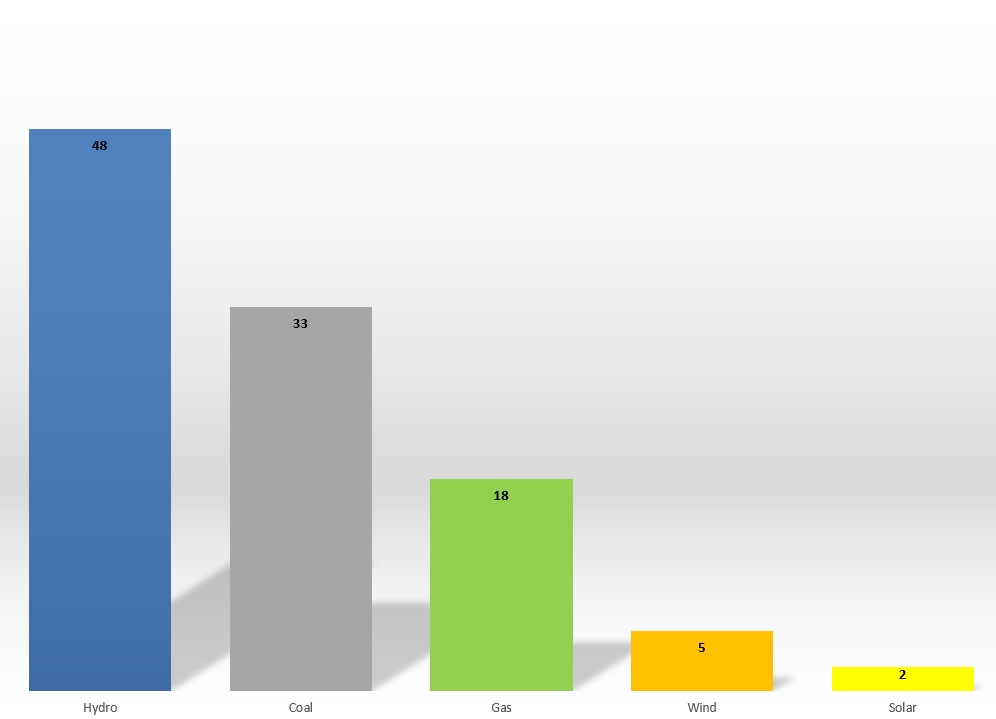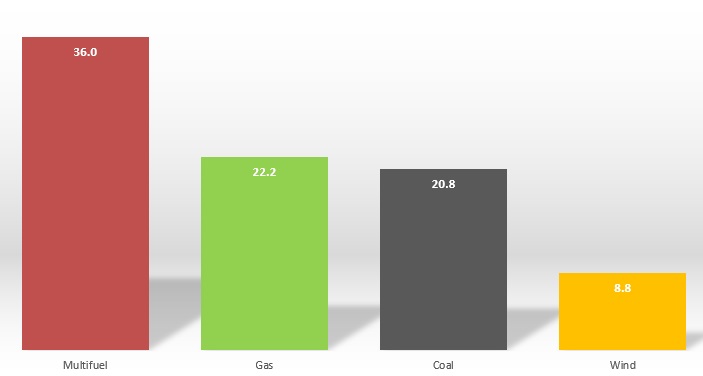Australia's power stations: Is there a generation gap?
The National Electricity Market’s (NEM) principal generation supply continues to be predominantly made up of coal-fired, gas and hydro power plants. Most of the recent new build in the NEM has been of intermittent generation encouraged by the Renewable Energy Target.
Given that up until the South Australian Government’s announcement that it would invest in a gas peaking plant in a bid to address its supply reliability issues, there has been a shortage of investment in new firm generation. That lack of investment appetite has largely been driven by extended policy uncertainty. In fact, until this week’s SA energy plan most of the activity in firm generation has been to retire capacity.
So what does that mean for the age profile of the remaining principal generators?
A look at the NEM
The majority of baseload generators across the NEM are 30-50 year old assets. Coal-fired generation units across the NEM are an average age of 33 years old, while the average retirement age since 2012 has been 35 years. Coal units are not the only fuel type approaching what are considered typical retirement age.
The NEM’s gas power station units have an average age of 18 years. In the last six years there has been one new gas-fired baseload station built across the NEM.
Hydro has an average age of 48 years across the NEM, although this is skewed with more than 20 hydro power stations in Tasmania being more than 38 years old. Hydro has also had two new stations built in Tasmania and Victoria in the past eight years.
Despite the small number of gas generation plants developed over the past 10 to 15 years, which are not at significant risk of potential retirement over the next decade, the baseload generation fleet across the NEM is getting older.
Evidence of the NEM regions’ investment in renewable energy can be seen with the average ages of wind and solar farms. Wind and Solar have an average ages of five and two years respectively. Hydro has an average age of 48 years across the NEM, although this is skewed with more than 20 hydro power stations in Tasmania being more than 38 years old. Hydro has also had two new stations built in Tasmania and Victoria in the past eight years. Table 1 and Figure 1 shows the age of power generators across the NEM by fuel source.
Table 1: Age of NEM of principal generation fleet – by number of projects and capacity as at 2016

Source: AEC/ENA Electricity Gas Australia time series data
Figure 1: Average age of NEM of principal generation fleet

Source: AEC/ENA Electricity Gas Australia time series data
The NEM continues to be largely supplied by ageing coal-fired, gas and hydro power plants generation and these synchronous generators provide a number of valuable services to the electricity system, which include:
- They are dispatchable, meaning they can supply highly controlled electricity output on demand. Although coal-fired power stations may be less flexible than gas or hydro plants, they can increase or decrease output as required. As a result, their supply is very reliable, with only occasional unplanned outages.
- Stability and grid security. Coal-fired plants, or other plant based on rotating turbines, such as gas, hydro, nuclear or geothermal, are described as synchronous, which allows the electricity system to address rapid changes in frequency due to significant changes in either supply or demand.
- They provide large levels of voltage control and support to allow electrical energy to be securely moved through the transmission system to meet consumer demand. Without this level of voltage support and control, Transmission Network Service Providers will be required to install additional voltage control and support equipment within the network.
Due to costly emissions controls and renewable subsidies, existing coal-fired stations are not operating beyond historic retirement ages as utilities try to recoup the significant capital costs. On average the coal fired generations have retired around 35 years old. Most recently, the brown-coal fired Northern Power Station in South Australia has been decommissioned while the Hazelwood Power Station in Victoria is due to close in March this year. Together they have taken more than 2,000MW of firm generation out of the market.
Currently, there is a lack of cost effective alternatives for baseload electricity in Australia. Hydroelectricity plays a minor role in all jurisdictions, apart from Tasmania, while SA, as a consequence of the growth of wind generation, has become increasingly reliant on gas-fired generation to supplement power from renewables.
Western Australian story
In contrast to the NEM six gas power stations have been commissioned in Western Australia in the past 10 years and as a result gas now accounts for more than 47 per cent of that state’s generation mix (that does not include its multi fuel power stations, which also use some gas as a fuel). WA’s gas power stations have an average age of 22 years. Figure 2 and table 2 highlight the age of the WA fleet.
Table 2: Age of WA principal fleet as at 2016

Source: AEC/ENA Electricity Gas Australia time series data
Figure 2: Average Age of WA principal fleet

Source: AEC/ENA Electricity Gas Australia time series data
The Western Australian government has a domestic gas reservation policy which was partly implemented to provide sufficient supplies of gas to be available for Western Australia’s long-term energy security and economic development by ensuring adequate access to domestic gas supplies.
Related Analysis
A farewell to UK coal
While Australia is still grappling with the timetable for closure of its coal-fired power stations and how best to manage the energy transition, the UK firmly set its sights on October this year as the right time for all coal to exit its grid a few years ago. Now its last operating coal-fired plant – Ratcliffe-on-Soar – has already taken delivery of its last coal and will cease generating at the end of this month. We take a look at the closure and the UK’s move away from coal.
Retail protection reviews – A view from the frontline
The Australian Energy Regulator (AER) and the Essential Services Commission (ESC) have released separate papers to review and consult on changes to their respective regulation around payment difficulty. Many elements of the proposed changes focus on the interactions between an energy retailer’s call-centre and their hardship customers, we visited one of these call centres to understand how these frameworks are implemented in practice. Drawing on this experience, we take a look at the reviews that are underway.
Delivering on the ISP – risks and opportunities for future iterations
AEMO’s Integrated System Plan (ISP) maps an optimal development path (ODP) for generation, storage and network investments to hit the country’s net zero by 2050 target. It is predicated on a range of Federal and state government policy settings and reforms and on a range of scenarios succeeding. As with all modelling exercises, the ISP is based on a range of inputs and assumptions, all of which can, and do, change. AEMO itself has highlighted several risks. We take a look.
Send an email with your question or comment, and include your name and a short message and we'll get back to you shortly.



